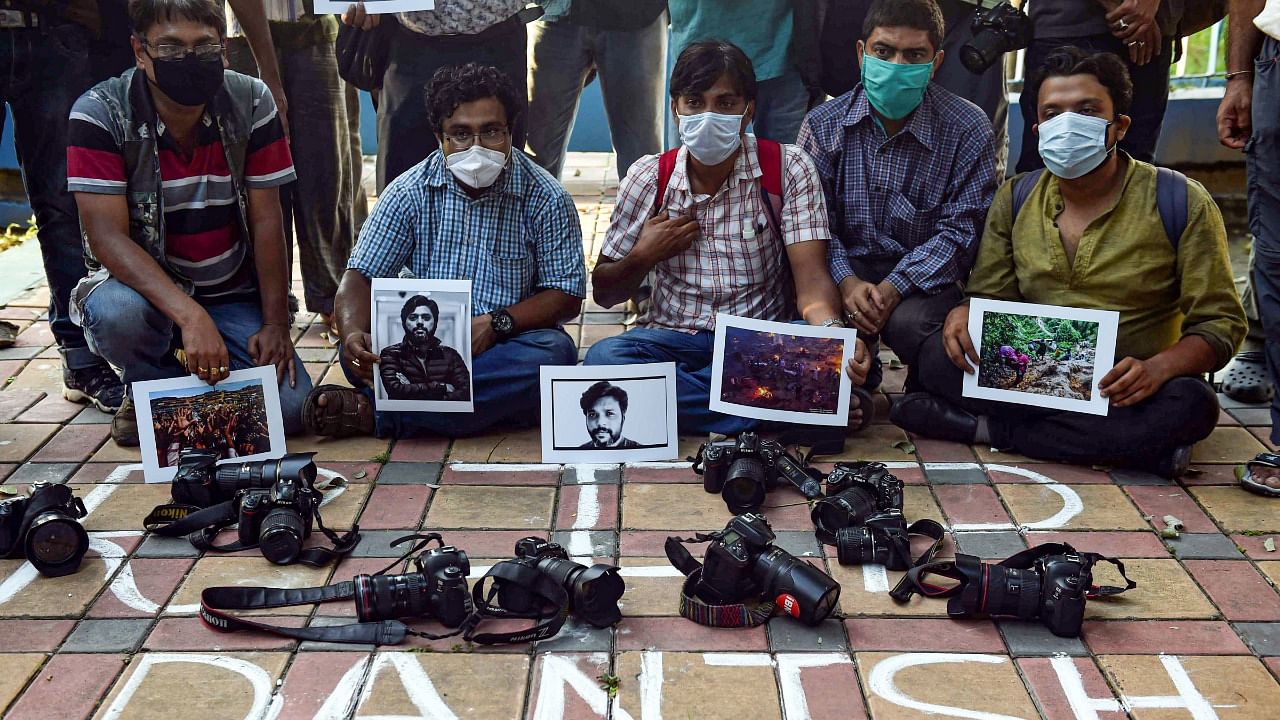
The International Press Institute, a global network of media professionals, on Friday mourned the death of Pulitzer Prize-winning Indian photojournalist Danish Siddiqui in Afghanistan, terming it an “immense loss” for journalism and a reminder of the enormous risks that journalists face while reporting from the conflict zones.
Siddiqui, 38, was on assignment in Afghanistan when he died. The award-winning journalist was killed while covering clashes between Afghan troops and the Taliban in Spin Boldak district of Kandahar city.
He was injured on Thursday night while accompanying Afghan soldiers who were attacked and succumbed to his injuries on Friday.
Also Read | Danish Siddiqui: The Pulitzer-winner photojournalist who captured the people behind the story
“IPI is incredibly saddened to learn of the death of Danish Siddiqui, one of the most accomplished photojournalists of our age. Journalism has suffered an immense loss. We send our solidarity to his family and colleagues,” the Vienna-based IPI said in a tweet.
Siddiqui won the Pulitzer Prize in 2018 as part of the Reuters team for their coverage of the Rohingya crisis. He had extensively covered the Afghanistan conflict, the Hong Kong protests and other major events in Asia, Middle East, and Europe.
"As a member of the Reuters team, he brilliantly chronicled some of the biggest international news events in recent years, with his images reaching millions around the globe and bringing him well-deserved recognition,” IPI Deputy Director Scott Griffen said in a statement.
“Danish’s death is a reminder of the enormous risks that journalists face in conflict zones as they work to bring the news to the world. Afghanistan, in particular, remains an especially dangerous environment for the press, a situation we fear will escalate with the ongoing withdrawal of foreign forces from the country,” Griffen said.
According to IPI, Siddiqui is the fifth journalist to be killed in Afghanistan this year. Three women media workers, who worked for the Enkass radio network, were killed on March 2 in Nangahar province, and on January 1, a journalist was shot dead in Ghor province.
Also Read | Pulitzer-winning photojournalist Danish Siddiqui killed in Afghanistan’s Kandahar province
Journalists in Afghanistan are extremely concerned over their safety following the rapid withdrawal of US and NATO troops, it said.
The safety of female journalists in Afghanistan is especially tenuous. According to the Afghan Journalists Safety Committee, 20 per cent of Afghan women journalists have quit or lost their jobs in the past few months because of the attacks and killings.
“They attack them to tell the other women journalists to stay at home. Since the fatal attack in Jalalabad, some media houses have asked their female employees to work from home for their own safety,” the IPI quoted Sharif Hasanyar, the head of Ariana News TV which is one of Afghanistan’s biggest news channels, as saying in a report in May.
“They (the Taliban) may not directly attack journalists or the media outlets, but there will be more restrictions on information. A lot will change in the constitution or the media laws,” Ahmad Quraishi, the executive director of Afghanistan Journalists’ Center, told IPI.
According to a report by Reporters without Borders (RSF), a total of 937 journalists have been killed over the past decade, with 50 journalists losing their lives in 2020, most of them deliberately targeted.
The report compiled by the Paris-based media watchdog said it had tallied 50 cases of journalists killed in connection with their work in 2020 (from January 1 to December 15), adding that this figure is very similar to 2019 (when 53 journalists were killed), although fewer journalists worked in the field last year because of the Covid-19 pandemic.